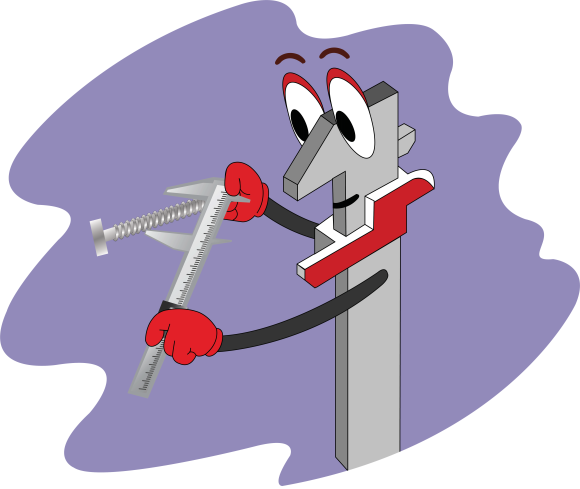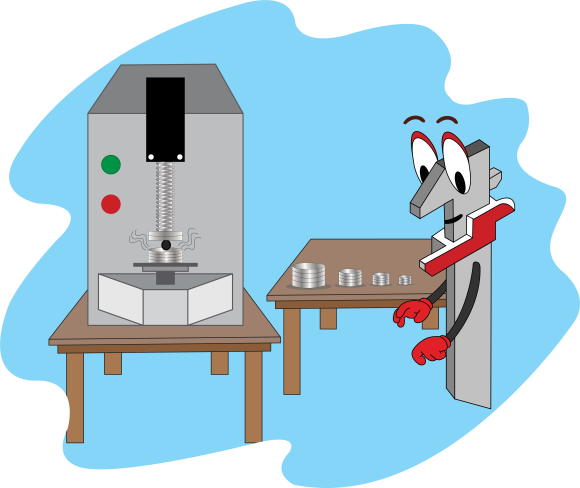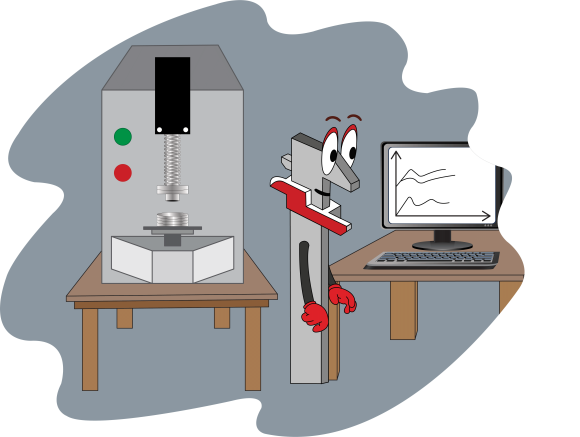Material analysis – Mr. Caliper explains how it works
Mr. Caliper, what exactly is a material analysis?
Material analysis determines the different elements and their mass ratios in an alloy. For this purpose, a small part of the sample is vaporised through an electric spark. The radiation generated is analysed by a spark emission spectrometer.
Why is it important?
The chemical composition of a product is the basic for almost all chemical and mechanical properties. For example, the carbon content is decisive for the hardness and tensile strength in case of low-alloy steels. Chromium and manganese support the through hardening during the heat treatment and are essential for larger dimensions. The corrosion resistance is largely determined using the ratio of chromium and nickel for stainless steels.
Which types of material analysis can be performed in the laboratory of Würth Industri Norge?
We can test iron-based products. Up to 26 elements are identified during every measurement depending on the measurement programme.
Test sequence
Mr. Caliper is ready to explain the material analysis on the products to you. Learn about the individual steps in detail!

To be able to perform a material analysis, the surface to be analysed should have a diameter of minimum 8 mm and a minimum thickness of 0.5 mm.

A new grinding wheel should be used for each sample to avoid any carry-over of different samples. It is important to ensure that the test surface is flat during the grinding process. In order to minimise possible contaminations, the samples are cleaned after the sample preparation and dried with ethanol.

At first the defined steel type has to be selected. In our example, it is a low-alloy steel. The machine automatically requests the operator to test specific reference samples. These differ depending on the steel grade selected and should be checked everyday before the actual testing. The device is also calibrated internally on a monthly basis.

After the set up is completed, the sample is placed on the spark stand on the opening of the electrode. After pressing the start button, a metal piece moves downwards and thus closes the electric circuit. The spark test is performed on the sample. Each measured element has different wavelengths and can be determined by the spectrometer. The intensity of the measured wavelengths defines the mass ratios of the different elements. The spark test is performed on the sample at least three times. If the reproducibility is okay, then the average is displayed for each mass ratio of the elements.

In addition to the usual standard information, the measured elements and their averages for each mass values are specified. The employee also evaluates and, if required, lists the elements deviating from the desired value.
Complete overview of the tests
Go to the complete overview and select the next test to learn about further details from Mr. Caliper!
Go to complete overview
Go to the next test
Go to the next test of our test laboratory with Mr. Caliper and find out about the salt spray test!
Go to salt spray test
The Würth Industrie Service GmbH & Co. KG collects and processes the personal data provided in the form in order to process the requested request for you. Please note the mandatory fields in the forms. The legal basis for this processing, the absolutely necessary data, is Art. 6 para. 1 lit. b DSGVO, implementation of a pre-contractual measure. The processing of data voluntarily provided by you is carried out on the basis of Art. 6 para. 1 lit. f DSGVO. Thereafter, processing is permissible which is necessary to safeguard our legitimate interests. Our legitimate interest is to have contact with you, our customers, to improve our consulting quality and to be able to contact you more easily in case of possible queries. The data collected will only be stored by us for as long as is necessary to process your enquiry and to contact you. They are then deleted.
Supplementary data protection information, in particular regarding your rights to information, correction, deletion, restriction of processing, objection and complaint, can be found in our data protection declaration.
